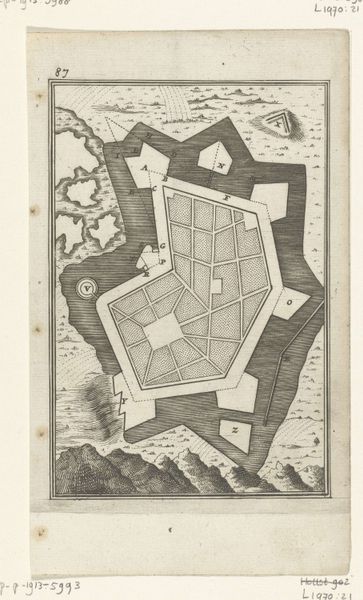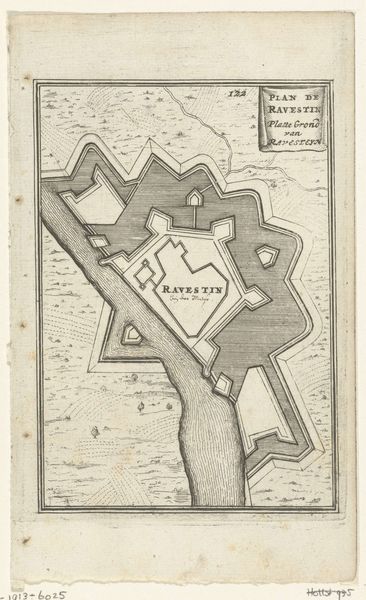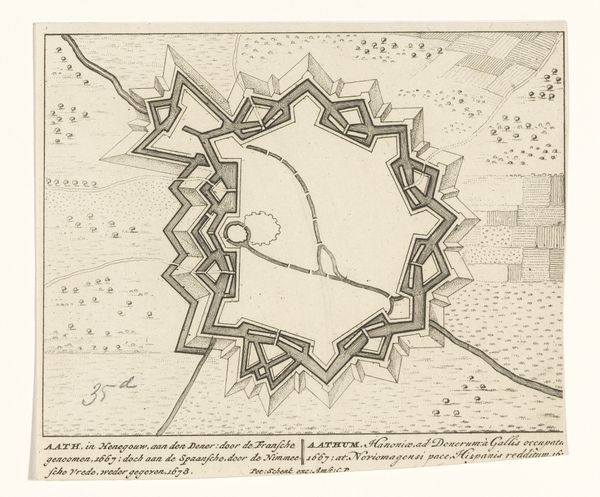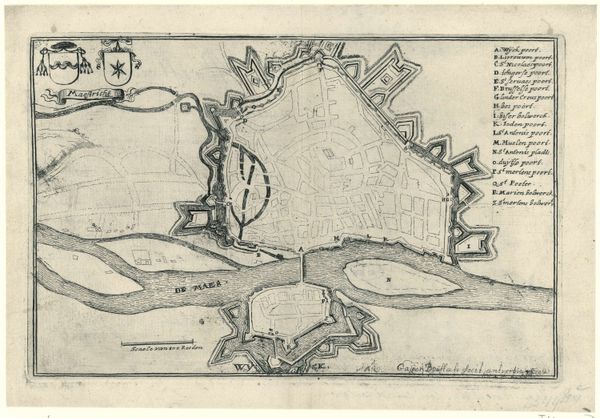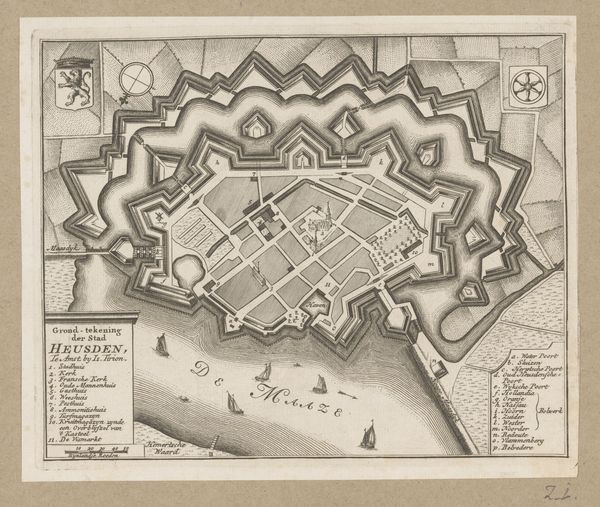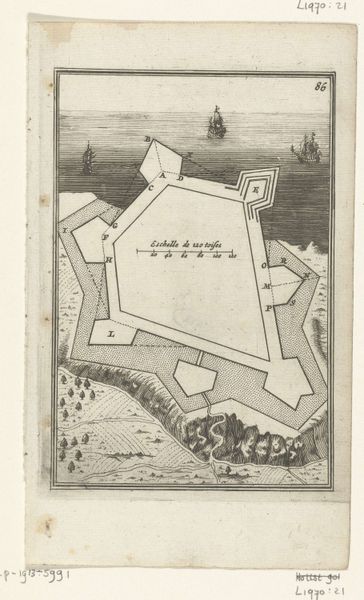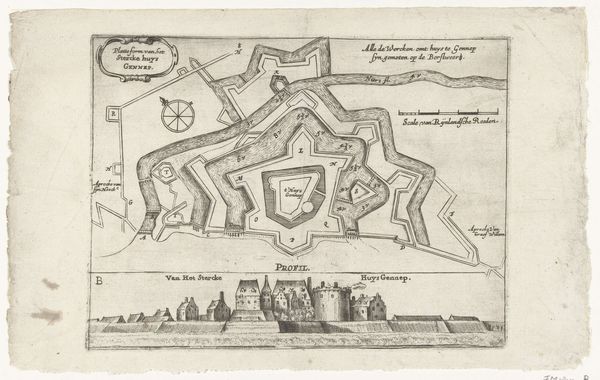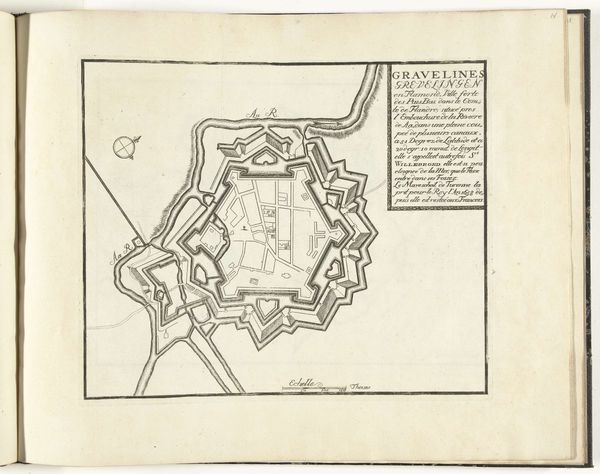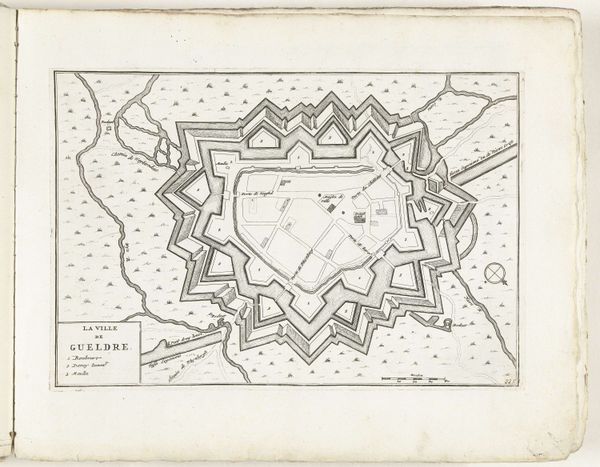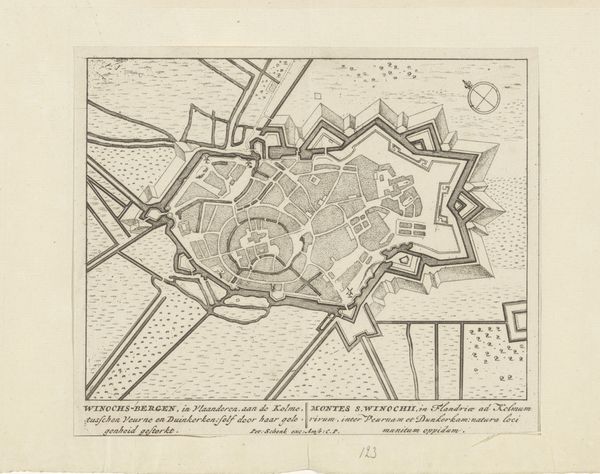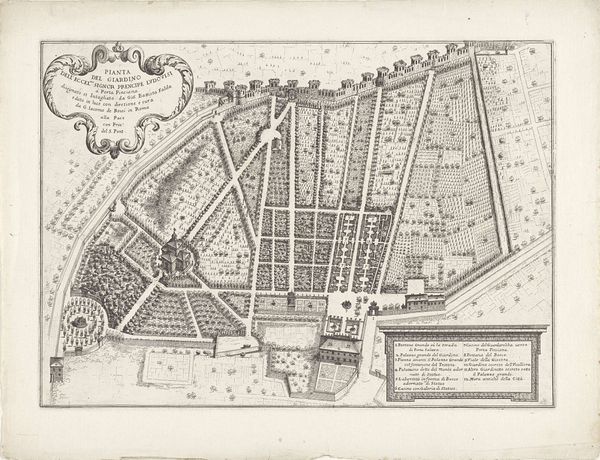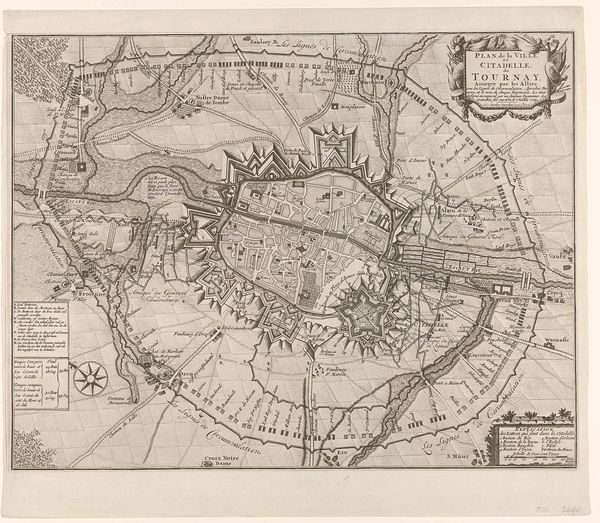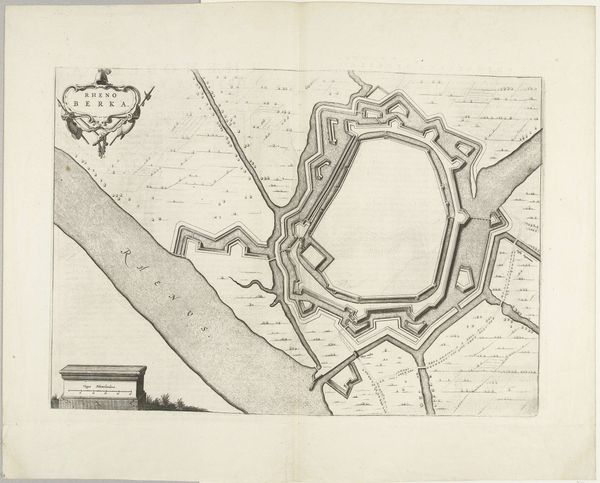
Plattegronden van de vestingen te Boertange en Zwartsluis, veroverd door de Fransen of Munstersen, 1672 1672
0:00
0:00
print, engraving
# print
#
cityscape
#
engraving
Dimensions: height 255 mm, width 190 mm
Copyright: Rijks Museum: Open Domain
Curator: Here we have Gaspar Bouttats' "Plattegronden van de vestingen te Boertange en Zwartsluis, veroverd door de Fransen of Munstersen, 1672," created in 1672. It’s a detailed print showcased at the Rijksmuseum. Editor: It's so intricate! It almost feels like looking at two halves of a puzzle, the geometric fort above a more organic coastline scene. How do you interpret this work? Curator: For me, these plans speak volumes about power and control in 17th-century Europe. The star-shaped fortress is not merely a visual representation but a symbol of dominance, built during a period of intense conflict and competition. Who controlled the land also controlled trade, influenced social mobility, and access to wealth. Notice how meticulously the engraver documented these military installations. What do you think was the intention? Editor: Well, perhaps a tool for strategic military planning? Curator: Precisely, but beyond military use, consider the message this meticulous rendering conveys to the viewer: an assertion of authority. The cityscapes below are an indication of urban space. They tell us about the impact on ordinary citizens whose lives were being disrupted during times of war, particularly marginalized communities who had even less access to fundamental resources. The maps also raise questions about territorial disputes between the French and the Dutch, as well as religious tensions in that region. Do you find it interesting that Bouttats highlights this political agenda through art? Editor: Absolutely! I didn't think about it that way. I thought they were just cool-looking maps. It's eye-opening how art from the past can be so intricately linked to the conflicts and sociopolitical changes of that era. Curator: It allows us to view art history as a means of actively reshaping perceptions of social agency. Understanding these historical dynamics makes the viewing experience so much richer.
Comments
No comments
Be the first to comment and join the conversation on the ultimate creative platform.
